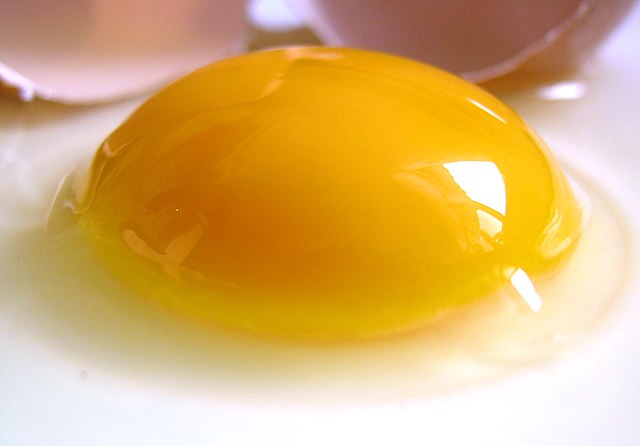Xanthophylls are yellow pigments that occur widely in nature and form one of two major divisions of the carotenoid group; the other division is formed by the carotenes. The name is from Greek: xanthos (ξανθός), meaning "yellow", and phyllon (φύλλον), meaning "leaf"), due to their formation of the yellow band seen in early chromatography of leaf pigments.
The characteristic color of egg yolk results from the presence of a xanthophyll pigment typical in color of lutein or zeaxanthin of the xanthophylls, a division of the carotenoids group.
Thin layer chromatography is used to separate components of a plant extract, illustrating the experiment with plant pigments that gave chromatography its name. Plant xanthophylls form the bright yellow band next to the green.
Carotenoids are yellow, orange, and red organic pigments that are produced by plants and algae, as well as several bacteria, archaea, and fungi. Carotenoids give the characteristic color to pumpkins, carrots, parsnips, corn, tomatoes, canaries, flamingos, salmon, lobster, shrimp, and daffodils. Over 1,100 identified carotenoids can be further categorized into two classes – xanthophylls and carotenes.
Gac fruit, rich in lycopene
Ingesting carotenoid-rich foods affects the plumage of flamingos.
The orange ring surrounding Grand Prismatic Spring is due to carotenoids produced by cyanobacteria and other bacteria.
Yellow and orange leaf colors in autumn are due to carotenoids, which are visible after chlorophyll degrades for the season.






